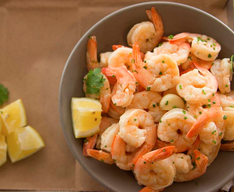March 2015, By Sherry Daye Scott, QSR Magazine

California-based fast casual Slapfish, which serves a range of premium seafood items—including a Bowl of Shrimp either chilled or fried—partners with Aquarium of the Pacific to develop and maintain a sustainable sourcing plan.
Though U.S. consumption is well below other proteins today, seafood will likely be an increasingly important part of the American diet in the years to come. The country’s population is predicted to grow by 89 million between 2010 and 2050 to 401 million people. More people require more food—and land limitations mean the beef, pork, and poultry industries can only produce so much volume.
Increased domestic consumption will have a direct impact on restaurant operators who serve finfish and shellfish. On one hand, more Americans eating seafood means the potential for increased sales. On the other, it also means the potential for higher wholesale prices. And while space limitations largely don’t affect the seafood industry, it has its own challenges to contend with, especially in the U.S.
For starters, more than 90 percent of the seafood the U.S. consumes is imported from countries with their own growing demand for protein. China, the global seafood producer and processor leader, is experiencing a rise in its middle class. China used to be a net exporter of seafood, but now it’s a net importer. The same is true of other seafood-producing countries in Asia and South America.
“If I am a buyer of seafood,” says Sebastian Belle, executive director of the Maine Aquaculture Association (MAA), “global demand is going to make it harder for me to source.”
In addition, climate changes are forcing suppliers to reevaluate their sourcing practices and invest in new practices, like aquaculture. These challenges have all levels of seafood stakeholders looking at new ways to approach the present—and future—state of the seafood industry.
Read more here

